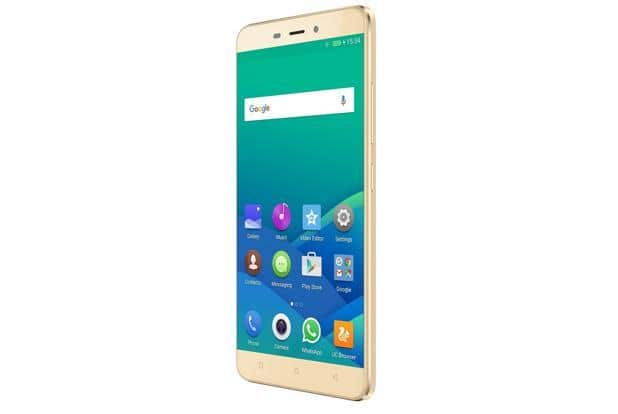Can Gionee P7 Max compete with Xiaomi Mi Max and Lenovo Zuk Z1?
Gionee's new smartphone has some good points but it faces stiff competition from its Chinese counterparts
 Premium
Premium
All phone companies are trying to cash on the ongoing festive season by offering heavy discounts, lucrative exchange plans or bundling freebies with their new and old phones on Amazon, Flipkart and Snapdeal. Chinese phonemaker Gionee has used the moment to come up with a new smartphone, P7 Max, to take on the likes of Xiaomi and Lenovo. The P7 Max is priced at Rs13,999, which makes comparisons with Xiaomi’s Mi Max (Rs13,999 reduced from Rs14,999) and Lenovo Zuk Z1 (Rs10,999 reduced from Rs13,499) imminent.
Old vs new
The Gionee smartphone is powered by MediaTek’s MT6595 octa-core processor and 3GB RAM. It is an older processor and had been used in Lenovo’s mid-range phone Vibe X2, released in November 2014. The Mi Max is based on Qualcomm’s more powerful Snapdragon 650 hexa-core processor with 3GB RAM in tow. The processor was launched early this year with Redmi Note 3 and has proved to be quite handy with graphic intensive tasks and games.
Lenovo’s smartphone is powered by an older but reliable Qualcomm Snapdragon 801 quad-core processor paired with 3GB RAM. It was once used in a number of flagship devices and is used mostly in mid-range smartphones these days such as the Lenovo Vibe X3 and the OnePlus X.
In terms of internal storage, the Zuk Z1 has an edge over the two. It offers 64GB of storage while P7 Max and Mi Max have only 32GB of internal storage. In case you need more you can always expand using microSD card in both of them, a feature the Zuk Z1 doesn’t have.
Size matters?
The battery is another area where, technically, the Mi Max and the Zuk Z1 has an edge over the P7 Max. The former comes with a mammoth 4,850mAh battery while the latter has a 4,100mA h battery. The P7 Max comes with a 3,100mAh battery only.
Given the fact that the Zuk Z1 runs on a less resource intensive Cyanogen OS, its battery is more likely to last longer of the three.
Big screen vs sharp screen
There is a big gulf between the three phones when it comes to screen sizes. The Gionee P7 Max comes with a 5.5-inch display with screen resolution of 1,280x720p and pixel density of 267ppi, while the Zuk Z1 offers screen resolution of 1,920x1,080p and pixel density of 401ppi on a 5.5-inch display. The Mi Max comes with a 6.4-inch display with screen resolution of 1,920x1,080p and pixel density of 342ppi.
The Mi Max is a solid proposition for users looking for a truly big screen phone for watching movies playing games and reading ebooks.
Al three phones allow users to tweak display colours for better effect. Xiaomi has a few extra features though, such as reading mode that turns the display look like the page of an old book and the Sunlit display that adjusts contrast levels in each pixel in the display by itself so the display can handle fluctuations in ambient light without causing any jarring changes in brightness levels.
Metal vs plastic
At 154mm, the Gionee P7 Max is as tall as the Lenovo Zuk Z1 (155mm) and several other big screen phones. However, it tips the scales at 184g, which is a bit on the higher side. The Mi Max is 173mm tall but weighs 203g. At 7.5mm, it is also thinner than the P7 Max’s 8.8mm and Zuk Z1’s 8.9mm form-factor. What gives the Mi Max an upper hand over the other two is the unibody metallic finish which gives it the look and feel of a high-end premium phone. The Gionee phone has a plastic back while the Zuk Z1 has a glass back and metal frame.
Future proofing
All three phones support 4G networks. The Mi Max and Zuk Z1 also offer a layer of extra security through finger print mechanism, a feature that is missing in the P7 Max. The Zuk Z1 also packs in a USB Type-C connector which provides faster data transfer, quick charging capabilities and connects with a USB cable irrespective of its orientation. The Mi Max and the P7 Max use the conventional micro USB slot.
Unlock a world of Benefits! From insightful newsletters to real-time stock tracking, breaking news and a personalized newsfeed – it's all here, just a click away! Login Now!



